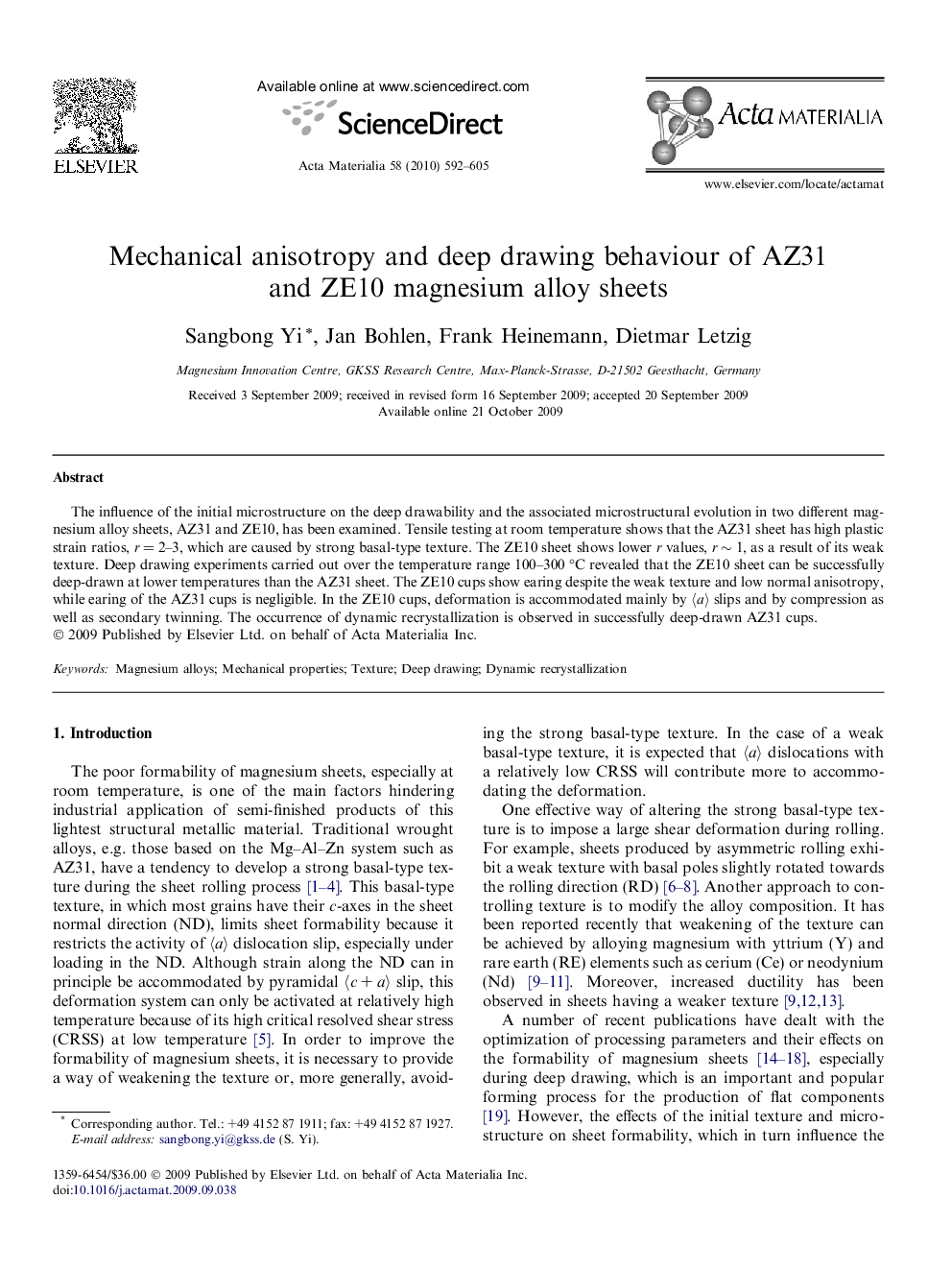| Article ID | Journal | Published Year | Pages | File Type |
|---|---|---|---|---|
| 1447888 | Acta Materialia | 2010 | 14 Pages |
The influence of the initial microstructure on the deep drawability and the associated microstructural evolution in two different magnesium alloy sheets, AZ31 and ZE10, has been examined. Tensile testing at room temperature shows that the AZ31 sheet has high plastic strain ratios, r = 2–3, which are caused by strong basal-type texture. The ZE10 sheet shows lower r values, r ∼ 1, as a result of its weak texture. Deep drawing experiments carried out over the temperature range 100–300 °C revealed that the ZE10 sheet can be successfully deep-drawn at lower temperatures than the AZ31 sheet. The ZE10 cups show earing despite the weak texture and low normal anisotropy, while earing of the AZ31 cups is negligible. In the ZE10 cups, deformation is accommodated mainly by 〈a〉 slips and by compression as well as secondary twinning. The occurrence of dynamic recrystallization is observed in successfully deep-drawn AZ31 cups.
